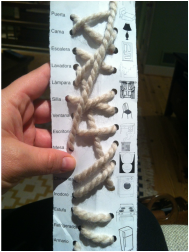
 Yesterday, I had the pleasure of meeting Heather Newman, a high school Spanish teacher in Delaware. Heather participated in a workshop I facilitated on co-teaching and differentiated instruction. One of our conversations concerned the need to add tactile and kinesthetic instruction to our lessons, no matter how old our students are. Heather showed this photo to me and explained how she had her Spanish 1 students match vocabulary to pictures using yarn. What a creative idea! She reported that her students loved it, commenting that it was so much better than another worksheet. Thanks for sharing, Heather!
0 Comments
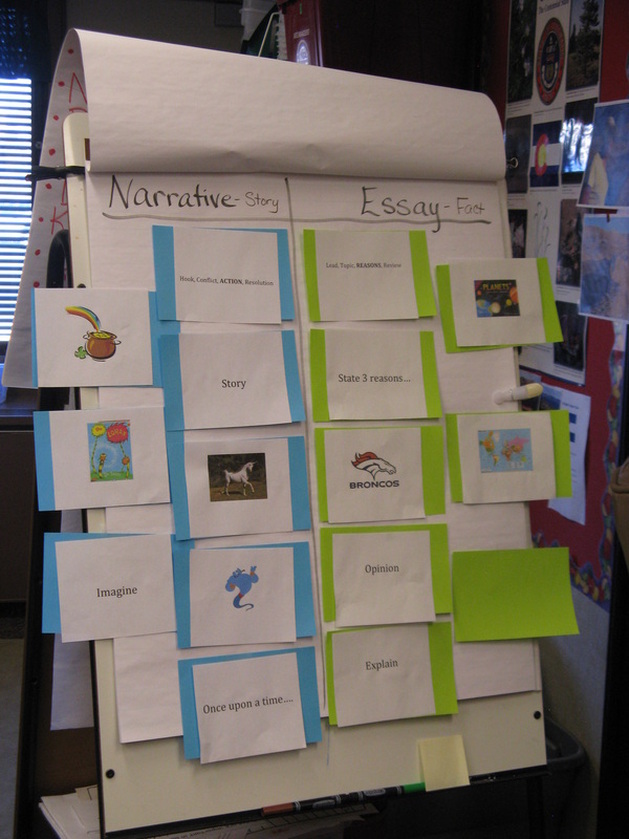 T-Charts are a common graphic organizer to assist students in thinking about the differences between two things that are related in some way. At times they are used to show examples and non-examples of one thing. Visually, they typically look like an capital or lowercase t. For students who struggle with language, whether because they are learning English or a student with a disability, T-charts can be enhanced by using pictures in addition to the traditional words. Here is a photo of a student-generated T-chart to show the differences between narrative writing and expository essay writing. Students worked with a partner. Each pair was given a paper with either a word or a picture. Pairs came up and placed the paper in the correct column and justified their decision. Research is clear that non-linguistic representations are very powerful. The next time you are using a graphic organizer, whether on chart paper or the computer, consider adding simple drawings, printed pictures, or photos. 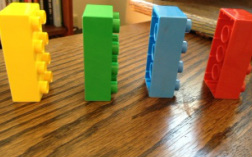 Yesterday I had the opportunity to work with students on building skills for writing a cause/effect essay. As a thought activator, I asked students to quickly line up some Legos I provided so that I could demonstrate the domino effect. Students worked in pairs to observe what occurred, talk about it and record the types of transition words they used to describe the cause/effect experience. 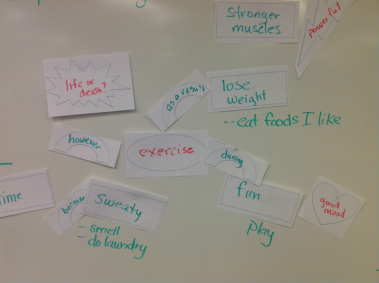 Next, I provided them with graphic organizer puzzle pieces. I modeled how one might plan for a cause/effect paper, including key transition words on the bridge shapes. Because we used puzzle pieces, instead of a static piece of paper, students were able to brainstorm first and then move pieces around to cluster their ideas. As a final step, they will put them into a sequence before they write their paper. If you would like the graphic organizer puzzle shapes, email me at anne@ideasforeducators.com and I will happily send them to you! 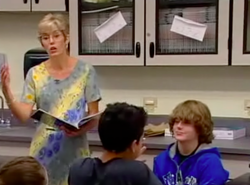 This week I had the opportunity to work with ELL specialists and their co-teachers in Cherry Creek Schools. One of our activities involved generating higher level thinking questions to engage students. Below are some of the creative ideas the co-teachers developed. Try stuffing each one in an envelope and posting the envelopes on the walls of your classroom (as seen in the photo.) Near the end of the lesson, ask a student to randomly choose one of the envelopes and read the question aloud. A great way to stimulate interesting thought and discussion!
Recently I had the opportunity to co-teach in a class where students were learning about reading diagrams. Working in teams, they were supposed to assemble a complicated Lego toy by following one of the diagrams that had been provided. (The teacher had distributed diagrams at 3 differing reading levels.) Watching them, I realized that one group was struggling because the students did not have a strategy for effectively scanning the diagram for key information. They had ignored one very important section of the page.
Afterwards, the teacher and I had an opportunity for professional dialogue about the lesson. We discussed the fact that reading tasks are not always linear, or logical, in their directionality. We realized that it isn’t always enough to provide materials at different ability levels. We also need to teach strategic skills. We then developed the solution shown in the photo below. Using plastic report covers, we divided the page into four quadrants and numbered them (similar to a graph.) Students can scan strategically, teachers can talk about items in each quadrant, and students can even annotate. We also realized that these clear report covers could be used to teach students about how to scan web pages (see photo.)  I attended my first geek camp this week, sponsored by Douglas County School District. One of the Web 2.0 tools I explored is called Mentor Mob. This tool allows you to organize your favorite learning websites into a playlist that reads a bit like an iBook. The developer’s objective is stated as: MentorMob is bringing sense to all of the disorganization of valuable information. Creating a playlist is free and fairly simple to do, and then can be embedded in your class website. This would be a simple way to provide students with pre-selected websites for research. In addition, you can add quizzes into the playlist at spots where you deem it appropriate. Viewers can also browse the playlists developed by others to find some new information based on topics of interest. In just a few minutes I developed a playlist of ten favorite sites related to differentiated instruction and embedded it into my website. Check it out here. 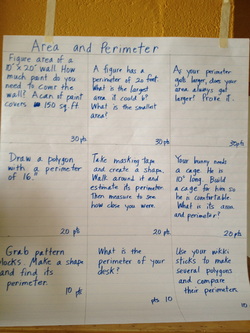 A Tic-Tac-Toe menu – a project oriented assignment that allows students to choose three of nine tasks – can incorporate all three of the major approaches to differentiation. Student interest is heightened by allowing choice; learning style is addressed by designing a variety of tasks; readiness is met by leveling the tasks. I suggest leveling each row of tasks (higher complexity, on-level, lower complexity) and linking points to each row (30, 20, 10.) Tell your students that they must earn a total of 40 points. This insures that all students will complete at least one on-level task. If you make the higher complexity tasks interesting enough, you will find that students who are ready for challenge often choose to do two of these! Here is a photo and an attached document of a leveled tic-tac-toe menu designed by some creative third grade teachers in Cheltenham Township. If you don’t teach this particular math concept, I think you will still be able to see how to change some of the words and tweak it to fit your content.
|
Anne M. BeninghofAnne's mission is to improve instruction through collaboration and the sharing of creative, practical ideas for educators. Archives
October 2022
Categories
All
|
||||||
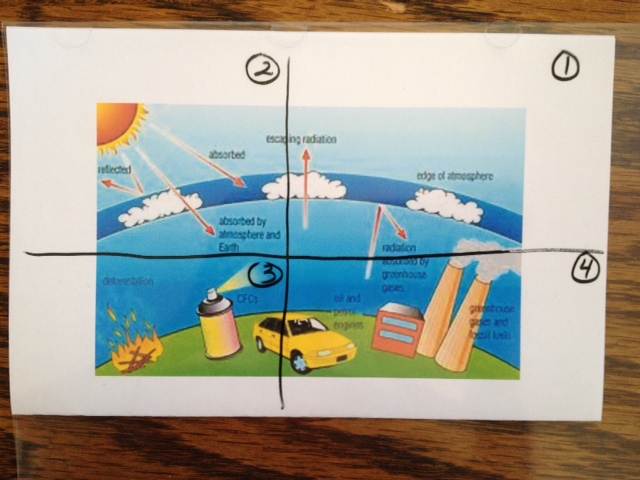
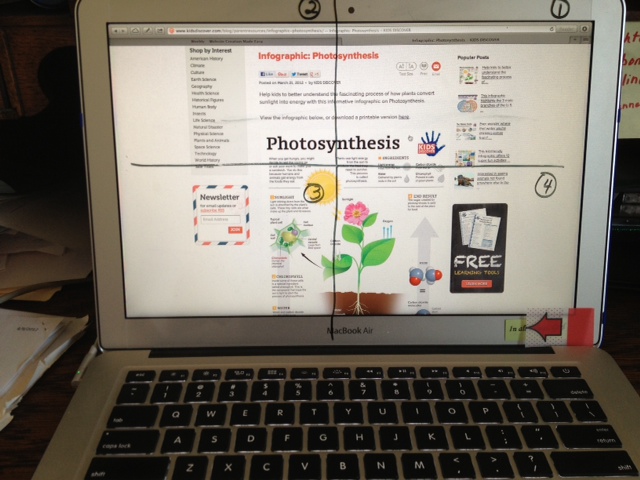
 RSS Feed
RSS Feed